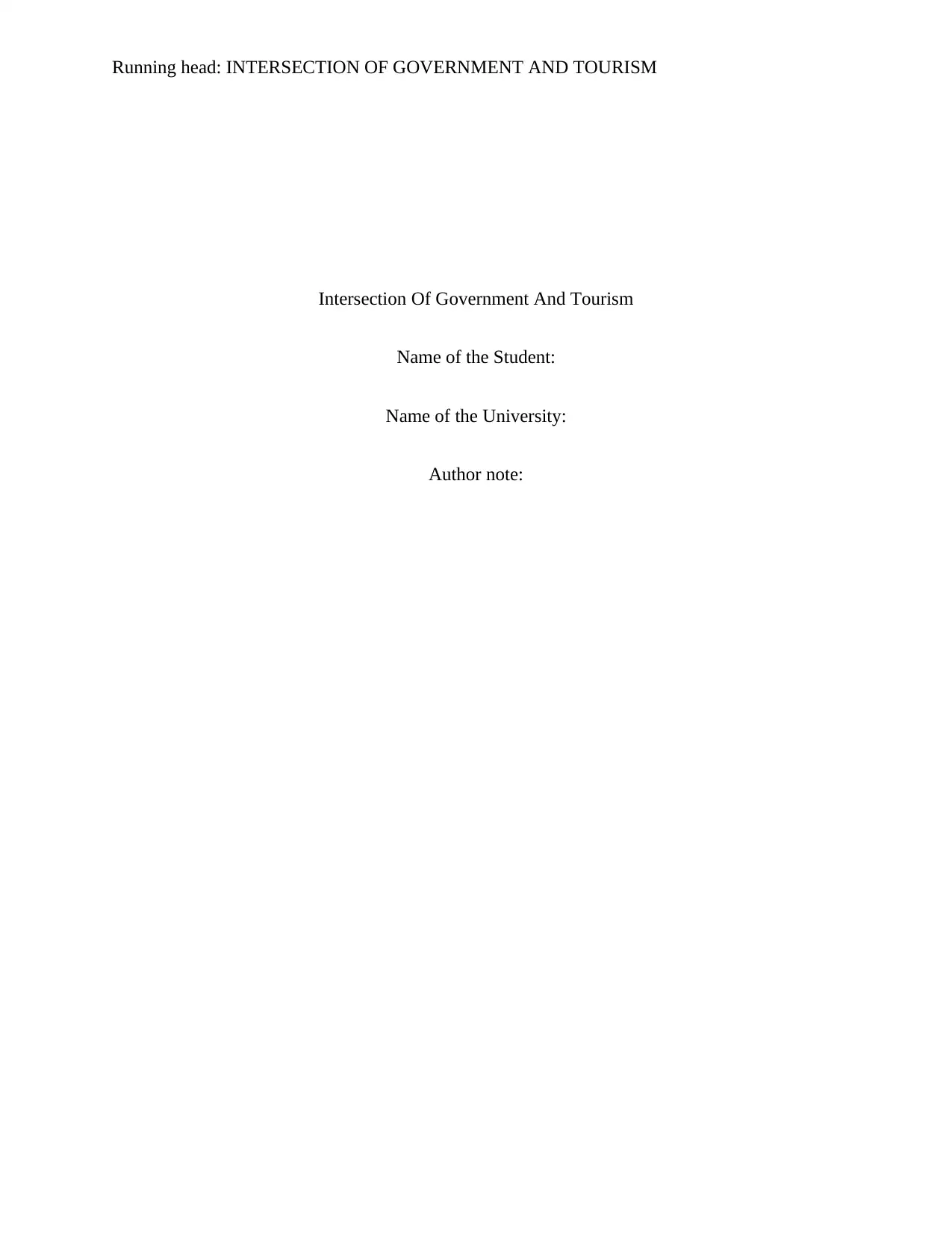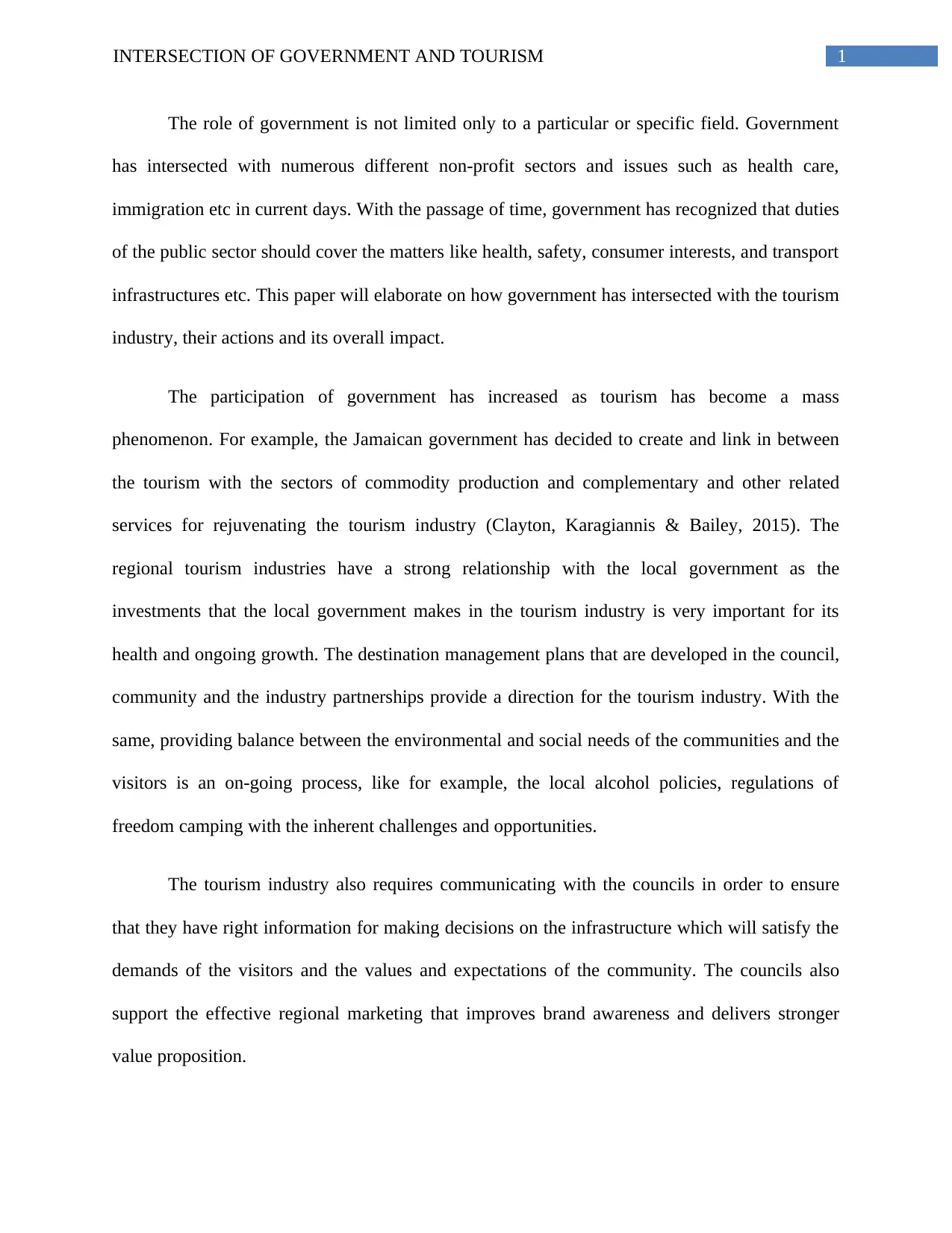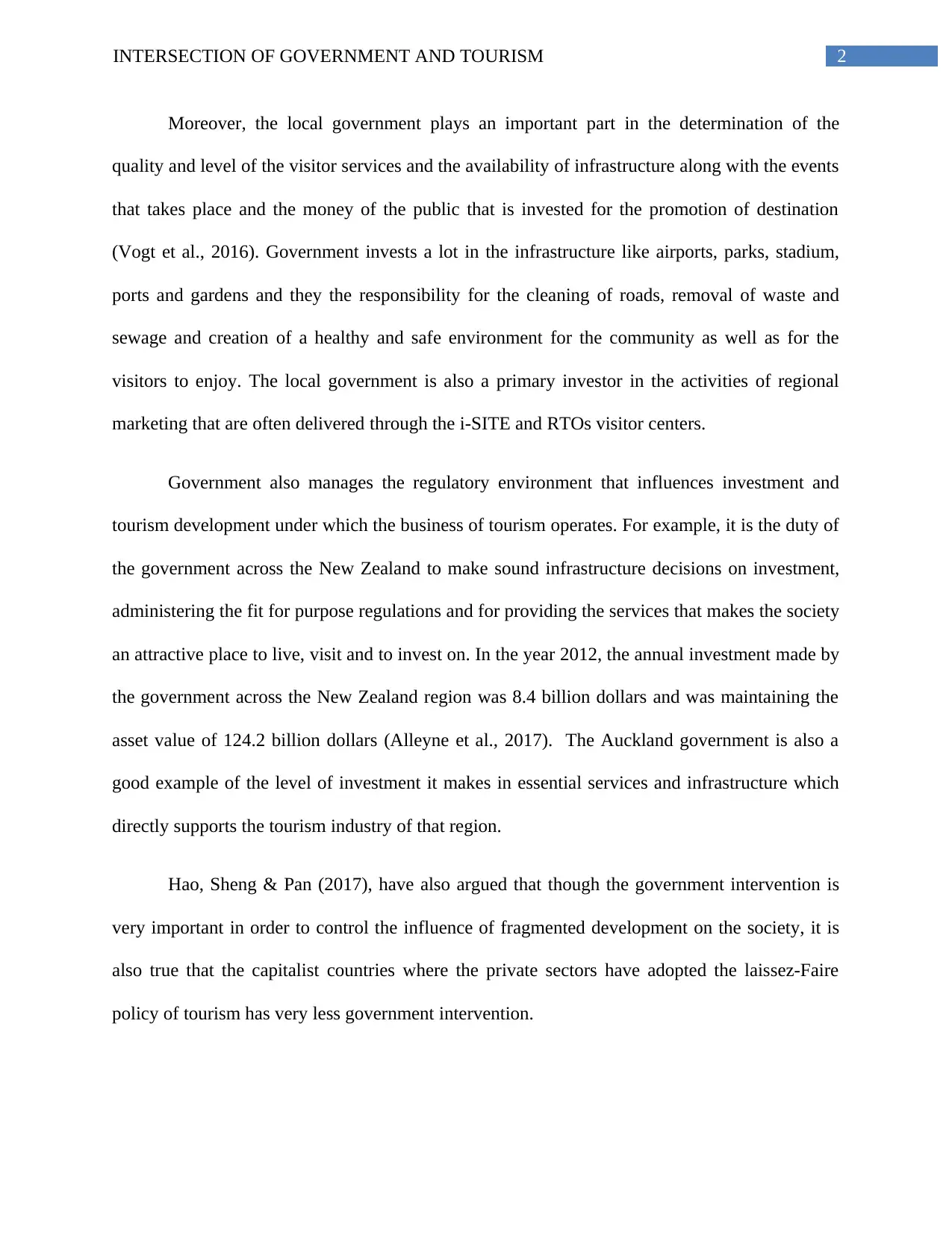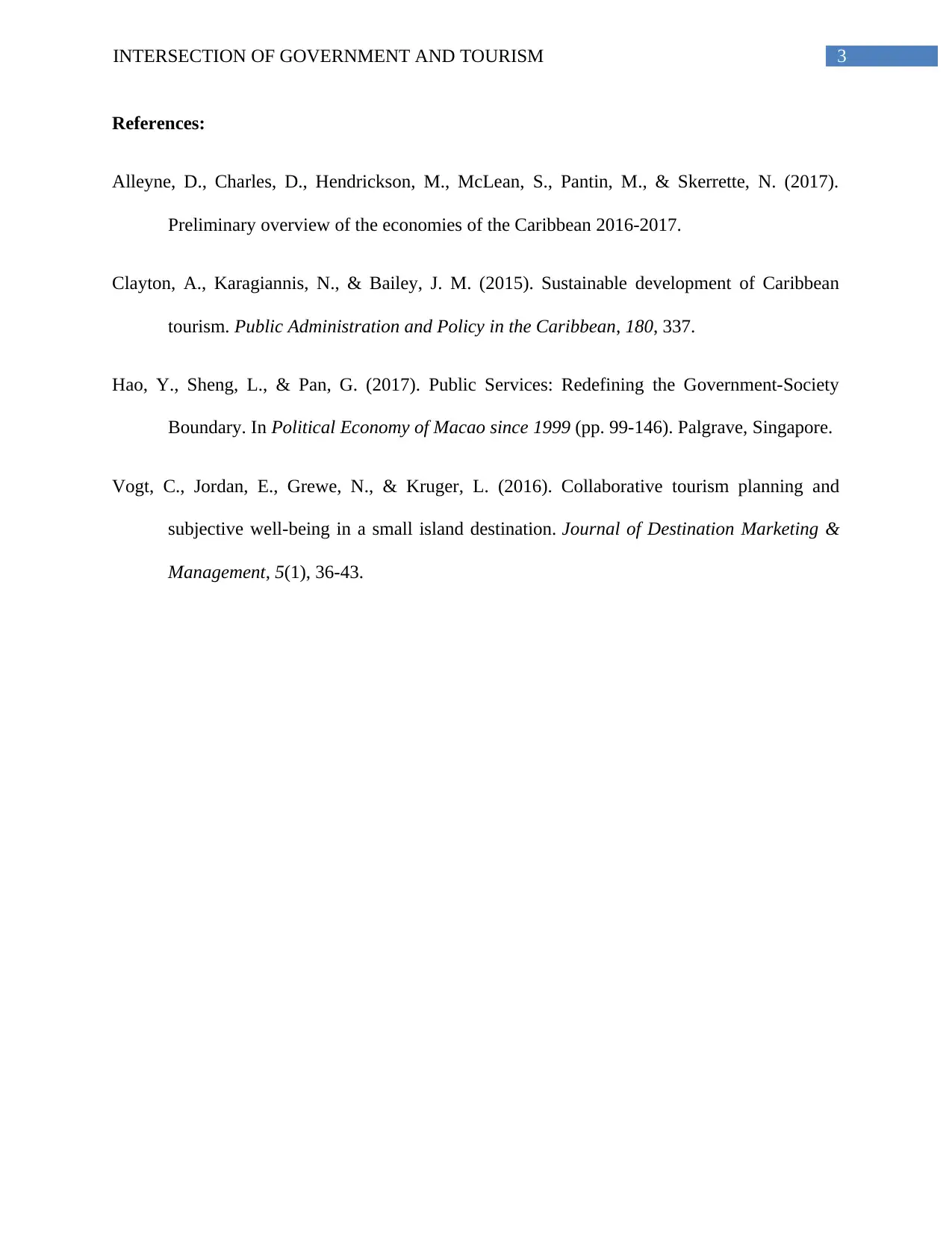Government and Tourism: Actions, Impact, and Intersections
VerifiedAdded on 2021/04/20
|4
|829
|30
Report
AI Summary
This report delves into the intersection of government and the tourism industry, highlighting the increasing role of government in tourism as a mass phenomenon. It explores how local governments invest in infrastructure, manage regulations, and support regional marketing to enhance tourism. The report emphasizes the importance of government decisions on infrastructure, visitor services, and creating an attractive environment for both residents and tourists. It provides examples such as the Jamaican government's efforts to link tourism with commodity production and the Auckland government's significant investments. The report also touches on the varying levels of government intervention in different economic models, referencing relevant literature to support its analysis. Overall, the report provides a comprehensive overview of government's multifaceted impact on tourism, from financial investments to regulatory frameworks.
1 out of 4











![[object Object]](/_next/static/media/star-bottom.7253800d.svg)